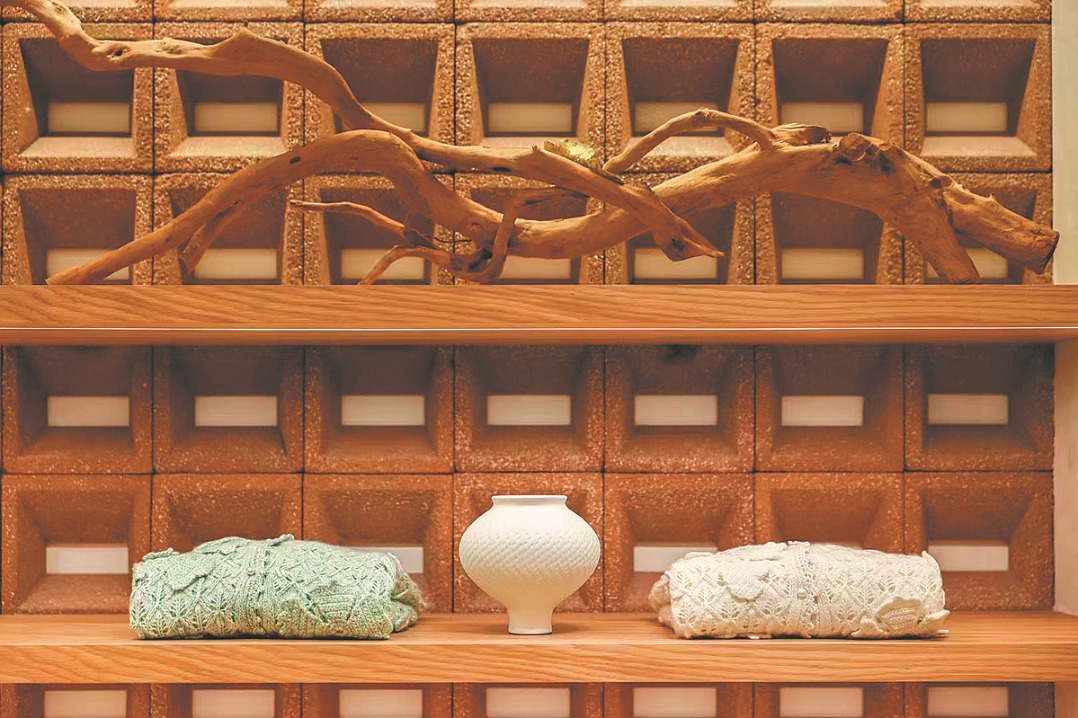Technology goes below the surface of Leonardo masterpiece
By Julian Shea in London | China Daily Global | Updated: 2019-11-13 17:45

Visitors to London's National Gallery can gain a unique insight into the creative process of one of the greatest brains in artistic history after a new exhibit opened to commemorate the 500th anniversary of the death of Leonardo da Vinci.
Leonardo: Experience a Masterpiece focuses on the painting The Virgin of the Rocks by the world-renowned Italian painter and inventor, and goes beneath its surface to reveal the development of the artist's original and much-altered plan.
Appropriately enough for a work by someone who is equally acclaimed for his artistic and scientific vision, it is use of the most cutting-edge technology that has allowed the gallery to present the picture as its contribution to worldwide commemorations of the master's anniversary.
"This is a project intended to showcase a great painting, and to do so in a way we can't normally do," curator Caroline Campbell told China Daily.
"We can't take people into our conservation studio and show them how we work, or show the picture in the way it was originally displayed, so this is groundbreaking. I think we're the first place in the world to use digital techniques this way to improve visitors' experience of the object."
The technology utilized is a scanning technique called XRF mapping, which allows art historians to create a map of the chemical elements used in the creation of the colors, which in turn reveals details hidden beneath of the picture's surface. And in the case of The Virgin of the Rocks, a picture of the Virgin Mary and infant Jesus, there are many hidden surprises.
"Leonardo received this commission shortly after arriving in Milan from Florence in the early 1480s, and it occupied him over 25 years – he wasn't working on it all that time, but he didn't complete it. He was famed for not finishing things and getting caught up in new ideas and moving on," Campbell said.
"It sits in a period where his work changed completely. In that time, he made enormous explorations and discovery in fields like optics, the working of the eye, light and shade – remember he wasn't just a painter, he was a great scientist and inventor. The main ways he uses that new knowledge in this picture are to use very strong light and shade, and also give edges an out-of-focus feeling.
"With the mapping, we could see outlines of an angel and a child that didn't end up in the finished painting. It's unusual to find these levels of change, but technology means we're always finding out more – that's why great art never stops giving."
The painting was commissioned as an altar piece for a chapel in Milan that is long since destroyed, but after exhibition visitors are guided through the science and the creativity of the artistic process, at its end, digital projections are deployed to present the work in the closest approximation possible of how it would originally have been displayed.
"Art historians have argued about this for years, so to be able to try and recreate it is very exciting," Campbell said. "The church was destroyed in the 19th century, and the altar piece around it was also lost, so using architectural and archeological evidence, and by looking at other works by the sculptor who created the altar piece, we've tried to reconstruct it."
Of all painters to be the recipient of such a digital makeover, Campbell said, Leonardo was the most appropriate. "If he was around today he'd be employing every technical initiative possible and he'd be fascinated by the potentials of the digital world," she said.
The exhibit at the gallery on Trafalgar Square in central London runs until Jan 12, and Campbell said she hoped it would encourage people not just to come to the gallery, but to stay for longer.
"We hope this will improve people's experience and deepen their knowledge of one of the most popular works of art in the gallery, and I hope it will make people look for longer, too," she said.
"In the gallery we see that so often, people look at things fleetingly. We hope this encourages them to take a long time to spend with one work of art, because sometimes, a picture can change your life."
























